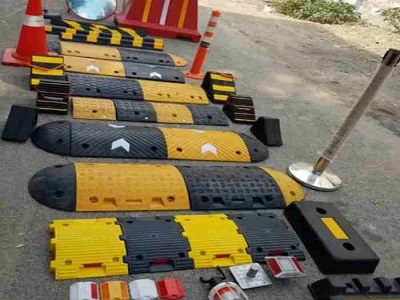
ROAD SAFETY PRODUCTS
Road safety products encompass a wide range of equipment and devices designed to enhance safety for motorists, pedestrians, and cyclists on roadways. Some common road safety products include:
1. **Traffic Cones**: Used for temporary traffic control and to indicate hazards or changes in road conditions.
2. **Reflective Vests and Clothing**: Worn by road workers and emergency responders to increase visibility, especially during low-light conditions.
3. **Road Signs**: Provide information, warnings, and regulatory instructions to drivers. These include speed limit signs, stop signs, yield signs, and more.
4. **Traffic Barriers and Guardrails**: Prevent vehicles from leaving the roadway or entering restricted areas. They can also help direct traffic flow.
5. **Speed Bumps and Humps**: Slow down vehicle speed in residential areas, parking lots, and other areas where pedestrian safety is a concern.
6. **Crosswalk Markings**: Enhance visibility for pedestrians crossing the road and indicate where drivers should yield.
7. **Road Markings and Pavement Markings**: Including lane lines, centerlines, edge lines, and other markings to guide drivers and delineate lanes.
8. **Safety Mirrors**: Installed at intersections or blind spots to improve visibility and reduce the risk of collisions.
9. **Bollards**: Rigid posts used to separate pedestrian areas from vehicle areas or to protect buildings and infrastructure from vehicle impact.
10. **Road Studs and Reflectors**: Mounted on the road surface to provide visual guidance and delineation, especially during nighttime or low-visibility conditions.
11. **Traffic Signals**: Control the flow of traffic at intersections, pedestrian crossings, and other critical points on the road.
12. **Crash Barriers**: Designed to absorb impact energy and redirect or stop vehicles in the event of a collision.
When considering road safety products, it's essential to assess the specific needs and conditions of the roadway or area where they will be deployed. Different environments may require different types of safety equipment, and proper installation and maintenance are crucial to ensuring their effectiveness.


